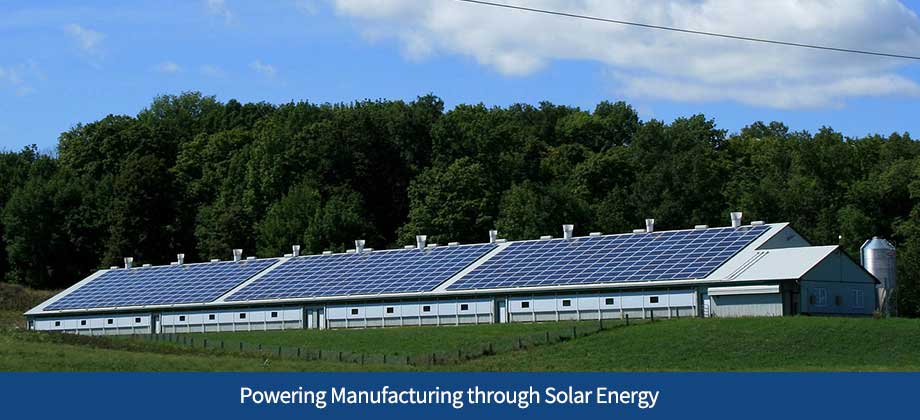Powering Manufacturing through Solar Energy

Solar power has seen tremendous growth over the past decade. In 2022, solar capacity in the United States exceeded enough to power 25 million homes. Homeowners with high electric bills, adequate sun exposure, and an eye on their environmental footprint tend to seek out solar panels as a great investment. Constructed of aluminum, copper, and glass, these panels can create decades of electricity without any carbon emissions. Of the total number of homes in the United States in 2020, 3.7 percent of them generated electricity via solar. But the manufacturing industry remains one area where solar could indeed have major potential. Let us explain…
There’s no doubt that manufacturing uses a lot of energy—”78 percent of total U.S. industrial sector end-use energy consumption” is from the manufacturing industry, according to the U.S. Energy Information Association (EIA). However, a new study from the journal Environmental Research: Sustainability and Infrastructure sheds light on a potential solution: “Results show that, depending on geographical location, rooftop solar PV can completely fulfill the electricity requirements of 5%–35% of manufacturing sectors considered on a net annual basis (assuming net metering). Furniture, textiles, and apparel manufacturing can be powered through on-site means in nearly every location, representing 2% of U.S. manufacturing electricity use and 6% of floorspace.”
Obviously solar power needs sunlight to work. The reason manufacturing sites are great candidates for solar is because so many of them are 1. Located in expansive, unobstructed areas of the country (the Southwest, for example) that receive ample amounts of sunlight and 2. Have flat rooftops—ideal for solar panels. When it comes to installation costs, we’ve also been seeing a steady decline; prices have dropped by a staggering 75 percent since 2010. Despite these promising factors, decarbonization doesn’t seem to be catching on: “Currently, less than 0.1% of the electricity required by the manufacturing sector in the US is generated through renewable, onsite sources,” according to the Environmental Research: Sustainability and Infrastructure study. Reducing this industrial dependency on non-renewable energy resources has the potential to reduce emissions across the entire globe (Industry makes up 23 percent of carbon dioxide emissions in the United States).
There’s reason to believe more manufacturers will start seriously considering the switch to solar. We need look no further than the “Long-Term Strategy of the United States: Pathways to Net-Zero Greenhouse Gas Emissions by 2050,” a government report that outlines a goal of “100 percent clean electricity by 2035” and net-zero emissions by 2050. Many states are already instituting deadlines for a transition away from fossil fuels, so the energy savings of solar panels may soon be realized as more manufacturing sites join the movement. And like many challenges in life, competition loves company: As more sites begin to go solar, competitors are sure to follow.
We’ll continue to keep an eye on the latest news and developments in the manufacturing industry. Just stop by the Financial Pantry for the content you need to stay informed, stay current, and stay successful.

